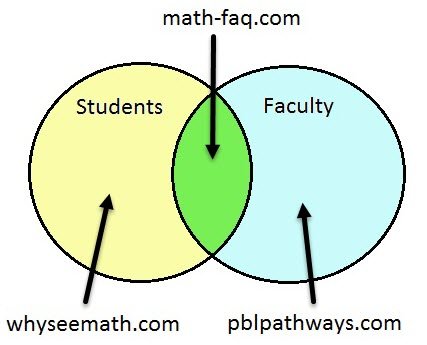
So you have created your first post and are thinking about how you might use a blog in your class. What is possible?
First of all, let’s get something straight. A blog is simply a way of publishing information on the Internet. Using a platform like WordPress, you can publish an entire website that is attractive and useful to your users. This might not be what you think when you hear the word “blog”. The reason for this is that blogs are often use as a reflective tool to publish the author’s thoughts and ideas. There are thousands of blogs online discussing almost every topic imaginable.
Audience
My writing is organized by audience. I maintain several different blogs based on who I am trying to reach.

My writing primarily appeals to students and faculty with some overlap in between. Because of this, I use three different blogs to reach those audiences.
The yellow region above consists of the students currently enrolled in my classes. I use the blog to communicate on a daily basis and to distribute handouts, calendars, videos, and other class materials. For each of my classes, it is embedded inside the learning management system (LMS) used by my college.
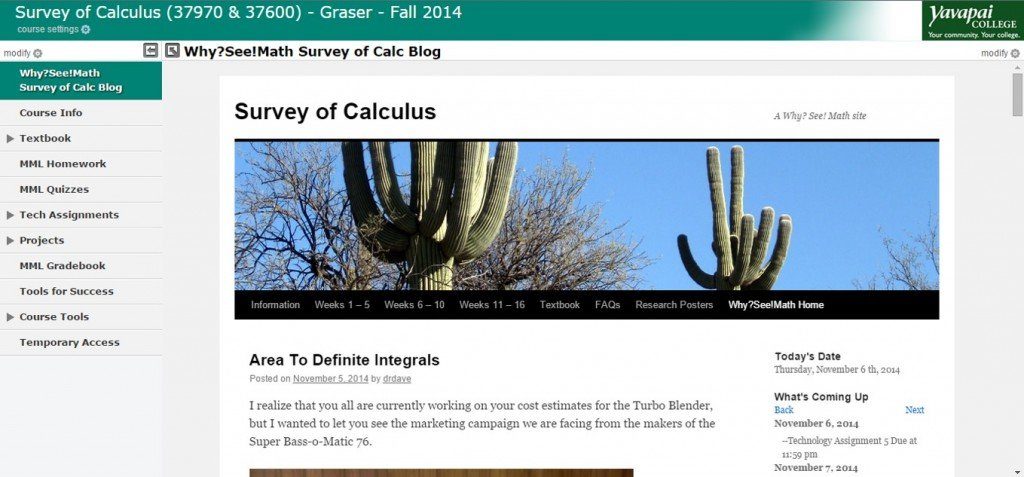
By placing the blog within the course, students can access their online homework and quizzes using the LMS menus and the blog’s resources through the blog menus. But the blog has a huge advantage over the LMS. It is also available outside of the LMS. This means that students can quickly access resources without logging into the LMS. For students, this is great when they simply need to know a due date or find a handout. And the blog is available outside of the regular semester and accessible to potential students in your course. This can be a powerful tool to market your class to the public.
The blue section of the diagram above is my faculty audience. The materials at the corresponding website, PBL Pathways, are resources that I want to share with mathematics faculty. This post is an example of the type of information I like to share with this audience.
The overlap of these two audiences is a curious mix of students and faculty. This might be a student at another institution who is looking for help on some topic or a faculty member who might want to link to one of my resources designed for students. This blog, , contains answers to mathematical questions students often have as well as ebooks I have written for several classes.
These three websites often utilize some of the same information. However, I change the information slightly so that it is appropriate for the particular audience. Depending on your intended audience, you might also have several blogs to distribute your reflections, resources, videos, and handouts.
Post or Page?
There are two ways to present content on a blog. Both methods are created using a simple editor that allows you to include many types of media. Depending on the content, you might place it in a post versus. To get an idea of which one is more appropriate, let’s examine the differences.
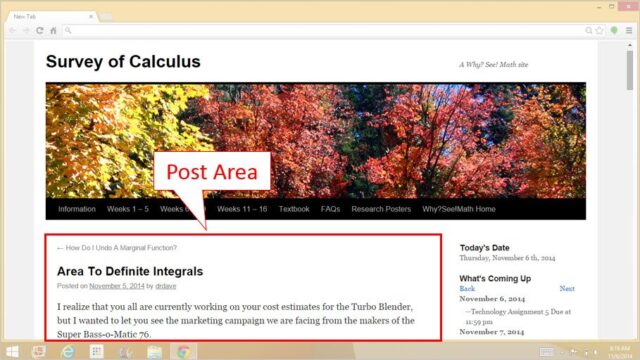
Posts are bit of content that appear on the blog’s main page in reverse chronological order. They may be categorized and tagged. This means you can organize your posts so that related information is grouped together and easily found on the blog. On this page, all of the posts that were categorized as “presentations” appear. As I add more posts with this category, they are automatically added to the page with the corresponding date.
blog12Posts also appear in the RSS feed from your blog. This means your readers can subscribe to information in posts and the information can be fed into other blogs. Post can be used like announcements in an LMS. They may also be released to the page according to a calendar. This allows you to write posts in advance and have them appear in the blog according to a schedule.
In my main page at , posts are fed into the sidebar of the page via RSS feeds. As posts are made in each of the blogs for my classes, they are fed into the sidebar. Readers can access the posts by clicking on the in the sidebar.
To make a post in the WordPress Dashboard, locate the Posts link along the left hand side of the page. For the more robust Dashboard, the link looks like the one below.
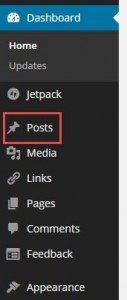
When you hover the cursor over the link, several selections will appear. Choose Add New to start entering your information.
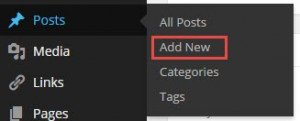
Pages are statics pieces of content that are not shown in chronological order. They can be added to menus, sidebars and other locations within the blog. In my blogs, I use pages to place content that I want my readers to be able to access at anytime. I place my course calendar, syllabus, weekly learning plans in pages and then link them to the menu at the top of the blog.
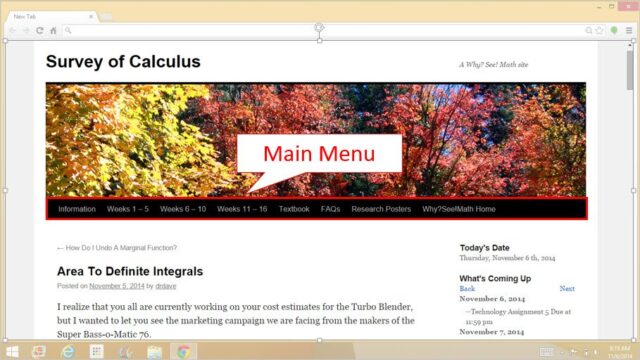
Each menu opens a submenu that allows the reader to access multiple pages in the blog.
The process of creating a page is very similar to the process of creating a post. Locate the Pages link along the left hand side of the robust dashboard.
When you hover over the link, you will see several options. Choose Add New to enter the content for the page.
This will send you to a text editor where you can enter your content for the page. This content may include text, pictures, video, and links. In Part 3 of this post, I’ll look at this editor and how to add equations to your blog.












